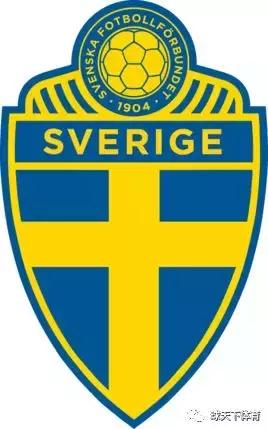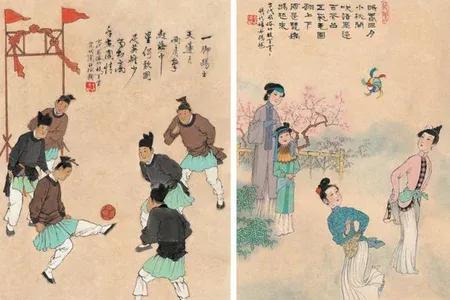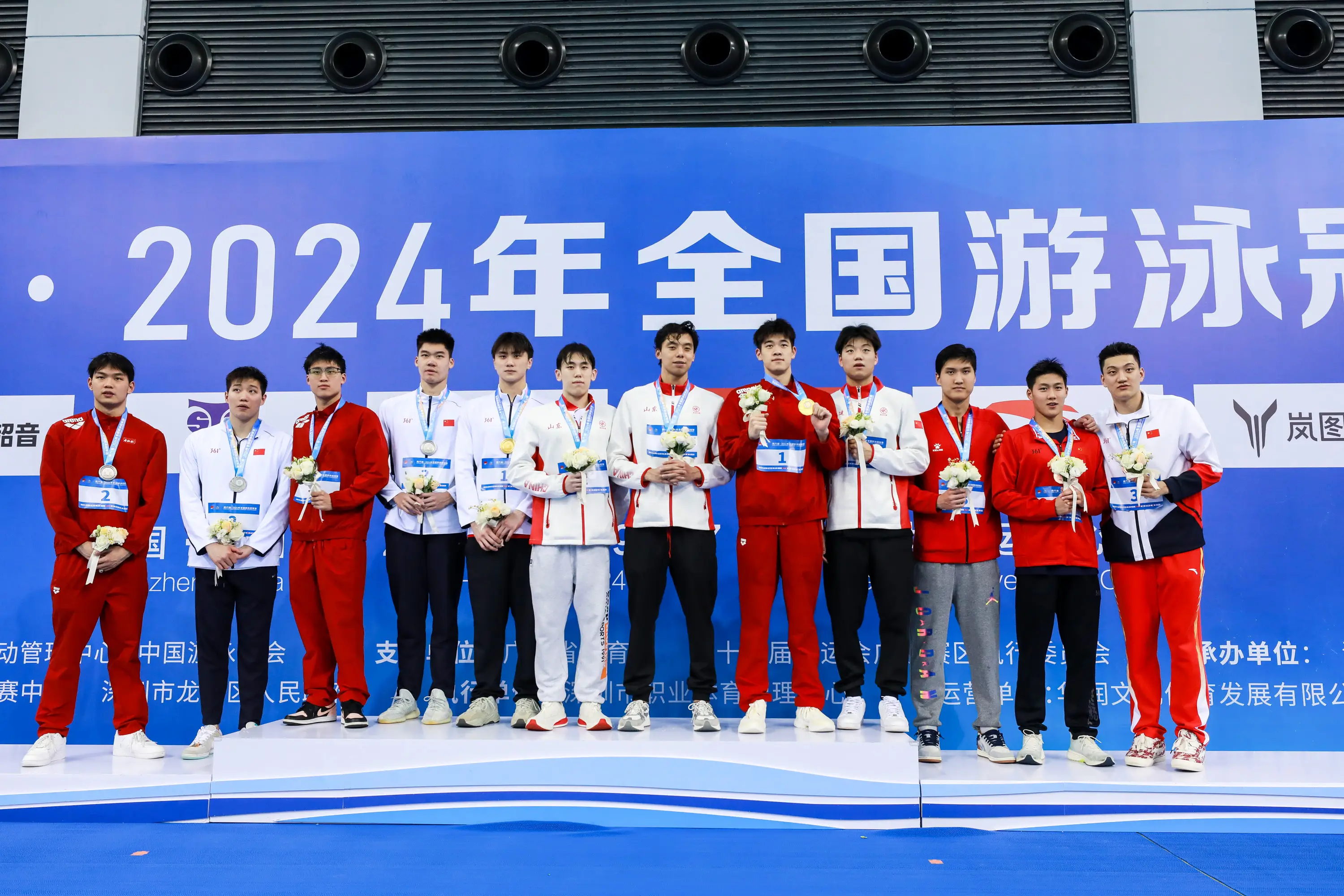关于在新时代全面加强和改善学校体育工作的意见
“关于新时代中全面加强和改善学校审美教育工作的意见”
最近,CPC中央委员会总部和国务院总部发表了“关于新时代中全面加强和改善学校体育工作的意见”,并在“全面加强和改善学校的审美教育工作”中发表了“意见”。新时代”并发出了要求所有部门所有地区的通知,将根据实际条件认真实施。
如下所示。
学校体育是一个基本项目,旨在实现培养道德和培养人并提高学生全面质量的基本任务。加快教育现代化并建立强大的教育国家和一个强大的体育国家是一项重要的任务。它是为了促进社会主义价值观,并培养学生的爱国主义和集体主义。 ,社会主义精神和努力争取进步和顽强的斗争的意愿在使用运动情报和体育思想方面具有独特的功能。为了实施Xi Jinping关于教育和体育和国家教育会议精神的重要论述,使学校体育工作处于更为突出的位置,并建立了一种教育系统,以全面培养道德,智慧,身体健康,美学和劳动,我们现在将全面加强和改善新时代的学校,以下意见在体育工作中提出。
1。总体要求
1。指导意识形态。在习近平的习俗思想的指导下,新时代的汉语特征,充分执行该党的教育政策,遵守社会主义的跑步学校的方向,以道德教育为基础,以核心社会主义价值观为指导,并为全面的发展服务学生并提高全面质量作为客观的质量,遵守健康的教育概念,首先促进年轻人的文化学习和体育锻炼的协调发展,帮助学生享受娱乐,增强身体健康,提高身体健康,提高自己的个性,脾气,培养自己的意志和培养社会主义建设,随着道德,智力,身体健康,美学以及劳动和继任者的全面发展。
2。工作原则
- 改进和创新,面对未来。根据时代的需求,更新教育概念,加深教学改革,使学校体育适应教育事业的改革和发展要求,与学生对高质量和丰富体育资源的期望保持一致,并建立全面培养道德,智力,身体健康,美学和劳动系统匹配的教育。
———填补缺点并独特地发展。弥补教师,场地,设备等的缺点,并促进学校体育的平衡发展。遵守整体晋升和典型指导的结合,并鼓励特征发展。推进中国运动的精神,促进中国体育项目,并通过“一所学校,一家产品”和“一所学校,多种产品”形成学校体育发展的新状况。
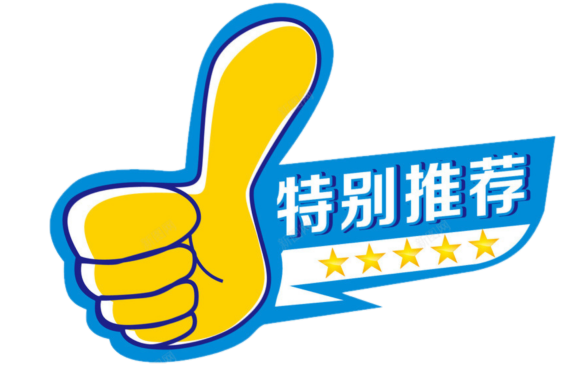
- 为您的内心和力量,并一起教育人们。加深体育和教育的整合,改善协作教育机制,为学生提供垂直进入专业运动队和专业体育俱乐部的渠道,并为家庭,学校,政府和社会建立和改善激励机制,以共同护理为和支持学生的全面健康成长。
3。主要目标。到2022年,所有体育老师都将具备和加强,所有体育课程都将得到充分组织,学校的体育工作系统和机制将变得更加健美,教学,培训和竞争系统将被建立,质量质量教育和教学将得到全面改进,教育结果将得到显着增强,学生的身体健康和全面的素质得到了显着提高。到2035年,将基本形成多样化,现代和高质量的学校运动系统。
2。不断加深教学改革
4。一直有良好的体育课程。严格实施建立学校体育课程的严格要求,不断扩大课程领域,逐渐增加班级小时并丰富课程内容。强制性教育和高中阶段的学校应严格遵循国家课程计划和课程标准,以提供足够的体育课程。鼓励基础教育的学校每天提供一个体育课。高等教育的学校必须包括运动培训计划中的运动,学生只能毕业,并符合身体健康,并符合标准和完整的体育学分。鼓励大学和研究机构将体育课程包括在公共课程系统中,以进行研究生教育。
5。加强体育课程和教科书系统的构建。学校的体育课程集中于小学,中学和小学生之间的联系,并专注于提高学生的核心素养。在学龄前的教育阶段,进行适合幼儿身体和心理特征的游戏活动,培养运动兴趣和爱好,并促进运动功能的协调发展。强制性教育的体育课程可帮助学生掌握1到2个运动技能,并指导学生建立正确的健康观点。高中的体育课程进一步发展了学生的体育专业知识,指导学生发展健康的生活方式,并形成积极而合理的个性。将职业教育体育课程与职业技能培训相结合,以培养身体和心理健康技术才能。在高等教育阶段将体育课程与创新人才的培养相结合,以崇高的精神追求和崇高的人格培养来培养高质量的才能。学校体育教科书系统的建设应植根于中国,并将中国和国外整合,完全反映意识形态,教育,创新和实用,并基于学生的年龄特征以及身心发展法,精选教材和丰富的教学资源关于课程目标和体育项目。 。
6。宣传中国传统体育项目。仔细整理传统的中国体育项目,例如武术,摔跤,国际象棋,射击艺术,龙船,班车,五种动物练习,龙和狮子舞,进行传统的运动教学,训练和竞赛活动,并根据当地条件以及将它们整合到学校体育教学,培训,竞争机制中,以形成中国传统的体育竞赛系统。培养一种阳光健康的校园体育文化,努力工作,培养学生的爱国主义,集体主义和社会主义精神,增强文化信心,并促进学生对知识和行动的统一性,坚强而有前途,并自我改善。深入执行“继承的力量 - 学校体育和艺术教育展览活动,以促进中国传统的文化成就”,加强宣传和促进,并让中国传统的体育在校园内闪耀。
7。加强学校的体育教学和培训。逐渐改善“健康知识 +基本体育技能 +特殊运动技能”的学校体育教学模型。教学生科学锻炼和健康知识,并指导学生掌握基本的运动技能,例如跑步,跳跃和拍摄,以及足球,篮球,排球,田径,游泳,体操,武术,武术,诸如足球,篮球,排球,田径,诸如特殊运动技能,冰雪运动。改善体育锻炼系统,广泛进行流行运动,定期举办学生体育会议或体育节,组成体育兴趣团体,俱乐部和俱乐部,并促进学生积极参加常规的课外训练和体育比赛。合理地安排校外运动活动,努力确保学生每天在校园和校外进行一个小时的体育活动时间,并促进学生养成终身运动的习惯。加强对年轻学生的军事训练。
8。改善体育竞赛和人才训练系统。建立一个为大学,中学以及中学和中学建立体育竞争系统,该系统整合了学校比赛,学校间联赛和选择性竞赛,并为国家,省,市政和县级的学校建立体育竞争系统,以及选择性竞争(夏令营)系统。学校团队将由大学,中学和小学建造,并参加区域甚至国家联赛。加强体育和教育的融合,广泛地进行青年体育夏季(冬季)营地,鼓励学校与体育学校和社交运动俱乐部合作,共同进行体育教学,培训和比赛,并促进深入的整合竞争系统。加深对全国学生会的改革,并每年进行活动的预赛。加强传统体育学校的建设,改善比赛,教师培训和其他工作,支持建立高级运动队,并提高传统体育学校的运动水平。加强大学和大学中高级运动队的建设,优化和扩展项目布局,加深入学率改革,培训,竞争和管理系统,将高级运动队和中学的高级运动队的建设联系起来学校体育比赛,并将其纳入国家竞争性体育储备才能训练系统中。加深针对高级运动员的注册系统的改革,建立和提高体育水平的标准,并为教育和体育系统中高级活动的相互认可开放渠道。
3。全面改善学校条件
9.充分加强体育老师。所有地区都应增加为中学和中学的体育教师完全装备的努力。没有设备齐全的领域应分配一定比例的地区,每年招募体育老师。在大学,中学和小学中建立全日制(兼职)教练职位。建立一个系统,以体育老师或教练的身份雇用出色的退休运动员。有条件的领域可以通过购买服务为中小学提供体育和教学服务,并与相关的专业机构和其他社会力量合作,以向小学和中学提供体育和教学服务,以减轻体育教育不足的问题。为主教体育专业的大学生实施教学支持计划。通过“国家培训计划”,我们将增加对农村体育教师的培训,支持更高的师范大学和高质量的中小学,以建立合作培训基础,并支持体育老师在海外学习。促进大学和大学体育专业的人才培训模型的改革,促进地方政府,大学以及中小学之间的合作教育,并建立许多试点学校和教育基础。显然,提供了学院和大学的职业体育专业和高级运动队教师和教练的最低设备标准。原则上,不符合标准的大学不得开放相关专业。

10。改进站点的构造和设备。研究和制定学校体育和卫生条件的国家基本标准。建立场地设施和特殊教室,以满足当然的教学和实践活动的需求。包括在当地强制性教育平衡的发展计划中在农村学校建造体育设施,鼓励在中小学中建立体育场地的地区,并与他们的体育基金会薄弱的学校共享。小型学校根据确保基本和底线保护的原则,配备了必要的功能教室,设施和设备。加强大学和大学体育场地的建设,并鼓励有条件的大学共同建立和与地方政府共享。装备体育教学所需的设备,并为运动器材建立补充机制。对于拥有高级运动队的学院,场地设备设备的条件应满足实际需求,原则上,如果不满足学生,则不应招募学生。
11。协调和整合社会资源。改善开放和促进学校和公共体育场地相互促进的机制,向公众开放学校体育场所,并免费或低收入学生向学生开放公共体育场所,并提高开放性和利用率的程度运动场所的效率。鼓励学校和社会运动场所合作提供体育课程。协调学校和社会资源,以及城市和社区建设计划应协调学生的体育锻炼需求,并应在学校或周围的环境中建立新项目。全面利用公共体育设施,并进行体育活动,作为解决上级和中学“ 3:30”课后服务问题的有效方法,以及为小学和中学生提供后课程服务的重要载体。
4。积极改善评估机制
12.促进学校体育评估改革。建立一种结合日常参与,身体健身监测和特殊运动技能测试的检查机制,并符合国家学生身体健康标准,作为教育和教学评估的重要组成部分。为了改善学生的身体健康记录,小学和中学应客观记录学生每天的身体健康和身体健康监测结果的身体参与,并定期向父母提供反馈。在初中和高中学术成就测试范围内包括体育科目。在中学入学考试中改善体格检查的内容,方法和评分方法,并从科学上确定并逐渐提高分数。积极促进在入学测试中在大学和大学中增加体育项目。开始有关在大学入学中使用物理扫盲评估结果的研究。加强学生的全面质量评估文件的使用,大学应使用学生的全面质量评估结果作为基于人才培训目标和专业学习需求的入学的重要参考。
13.改善体育教师的工作评估。教师道德和风格是评估体育教师质量的第一个标准。专注于教会的要求,勤奋的实践和定期比赛,提高体育教育教师的绩效工资以及评估和评估机制。评估取向从教师的教学数量转变为他们的教学程度,从完成的课程数量转变为教育和教学质量。体育教师指导学生勤奋,定期练习以及课外培训,课外活动,课后服务,学校安排的参与和教学指南以及学生的身体工作量以及学生的身体身体健康状况和竞争结果是绩效工资是内部分配的。改善体育教师的专业职权评估和任命标准,以确保体育教师在促进专业头衔和教学和研究结果评估方面与其他学科的教师相同的待遇。优化体育老师的工作结构,并使体育教师的职业发展渠道平滑。提高体育教师的科学研究能力,并在国家教育科学计划项目和教育部的人文和社会科学研究项目中建立特殊体育项目。提高体育教师的荣誉,并确保体育教师在选择和赞扬成就奖和其他教学成果中占一定比例。请参阅体育老师,学习并逐渐改善学校教练的工作评估。
14.改善教育监督和评估系统。在地方发展计划中包括学校体育,并阐明政府,教育行政部门和学校的责任。政策和措施的实施,学生的身体健康状况,质量评估状况以及对学校进行体育工作的支持将包括在教育监督和评估范围中。改善国家强制性教育运动质量监测,改善监测的科学性并发布监测结果。体育工作及其有效性被视为大学学校管理评估的重要指标,并将其包括在学院和大学的本科教学工作的评估指数系统中,以及对“双重一流”构建有效性的评估。未能执行政策并继续下降其身体健康合规率和质量评估及格率的地方政府,教育行政部门和学校领导人将根据法规和法律承担责任。
5。加强组织保证
15。加强组织领导和资金保证。当地各级的党委员会和政府应包括重要议程中的学校体育工作,并加强其地区的学校体育改革和发展的整体计划。党和政府的主要负责人应注意并关心学校体育工作。所有地区都应建立并加强学校体育部门的联合会议系统,并改善整体协调机制。在相关领先的干部培训计划中包括学校体育工作。各级政府应调整和优化教育支出结构,改善投资机制并积极支持学校体育工作。地方政府应在自己的水平上协调财政转让付款资金和财务资源的安排,以支持学校体育工作。鼓励和指导社会资金支持学校体育的发展,吸引社会捐款并通过多种渠道增加投资。
16。加强机构保证。改善学校体育法律制度,并研究和修改“学校体育工作法规”。鼓励地区引入学校体育法规和系统,以提供促进学校体育发展的强大法律保证。建立由政府领导的安全风险管理机制,由部门协调并由协会参与。改善政府,学校和家庭共同参与的学校运动伤害风险的预防和处理机制,并探索为涵盖运动意外伤害的学生建立全面的保险机制。试用学生运动活动安全事故的第三方调解机制。加强安全性教育并加强大规模体育活动的安全管理。
17。营造一种社会氛围。所有地区都应研究和实施特定的措施,以加强和改善新时代的学校体育工作,他们可以根据实际条件制定和实施为学校体育教师设备和场地设备建设的三年行动计划。总结经验和实践以构成流行的政策和系统。加强宣传,建立共识,并为整个社会提供良好的社会氛围,共同促进学校体育的发展。
如下所示,“关于全面加强和改善学校审美教育工作的观点的全文”如下。
美丽是纯粹道德和丰富精神的重要来源。审美教育是审美教育,情感教育和精神教育。这也是一种丰富想象力并培养创新意识的教育。它可以提高审美素养,培养情感,温暖灵魂,并激发创新和创造力。为了实施Xi Jinping关于教育和国家教育会议精神的重要论述,进一步加强了学校的审美教育和教育职能,并建立了一种教育体系,以全面培养道德,智慧,身体健身,美学和劳动,提出以下建议,以全面加强和改善新时代的学校审美教育工作。观点。
1。总体要求
1。指导意识形态。在新时代的习惯思考和汉语特征的指导下,充分执行了该党的教育政策,坚持社会主义的跑步学校的方向,以道德教育为基础,以核心社会主义价值观为指导,并改善学生的美学和人文扫盲作为目标。培养中国美学教育的精神,以美学的教育,美化人们,并通过美学培养其本质,将美学教育纳入各个级别和学校的人才培训的整个过程中,贯穿整个学校教育的各个阶段,并通过全面发展道德,智慧,身体健康,美学以及劳动和继任者来培养社会主义的建设。
2。工作原则
- - 到达正确的方向。将学校审美教育作为培养道德和培养人的重要载体,坚持促进核心社会主义价值观,增强中国优秀的传统文化,革命文化和先进的社会主义文化的教育,并带领学生建立正确的观点历史,国籍,国家和文化观点,培养崇高的情感,塑造美丽的心,并增强文化信心。
- - 整体。改善每个人的学校审美教育机制,缩小城乡阶层和学校间差距,以便所有学校的学生都有机会接受美学教育,促进各级和类型的美学教育的整体发展,并增强机密指导,鼓励特征发展,并在学校审美教育的发展中形成新的状况,并使用“一所学校,一个产品”和“一所学校,多个产品”。
- 改革和创新的地方。全面加深学校审美教育的全面改革,遵守道德,智力,身体健身,美学和劳动的五种教育,增强各种学科的有机融合,整合审美教育资源,弥补发展短缺,增强实际经验,加强实践经验,实践经验,实践经验,实践经验,实践教育资源在整个过程中改善评估机制,并在各个方面进行教育。形成一种新的学校美学教育模式,充满活力,多方合作,开放和高效。
3。主要目标。到2022年,学校将在审美教育方面取得突破,审美教育课程将完全开放,教育和教学改革将是有效的,资源分配将不断优化,评估系统将逐渐改善,管理机制,管理机制将会更加完美,教育结果将大大提高,学生的美学和人文学科将得到极大的增强。质量得到了显着提高。到2035年,具有中国特征的现代学校审美教育系统将基本形成,并具有全面的覆盖,多元化和高质量。
2。不断改进课程和教科书系统
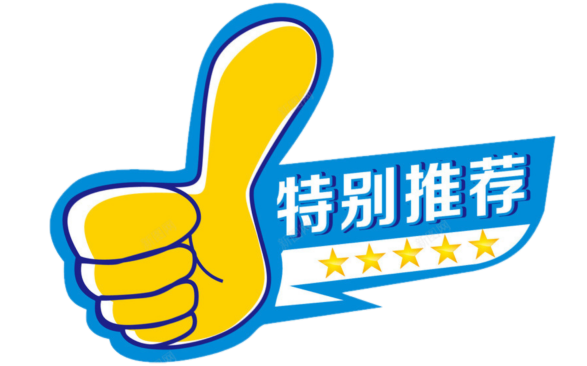
4。建立纪律整合的概念。加强审美教育与道德教育,知识教育,体育和劳动教育的融合,并充分探索和使用精神之美,仪式和音乐,语言美丽,行为美,科学美,科学美,秩序之美,反映了中国人审美教育精神和民族美学特征,丰富的审美教育资源,例如健康,努力和艺术美。有机地整合相关学科的审美教育内容,促进课程教学,社会实践和校园文化建设的深入整合,并大力将跨学科的教育和教学以及校外校外实践活动与美学教育进行主题。
5。改进课程设置。学校的审美教育课程主要基于艺术课程,主要包括音乐,艺术,书法,舞蹈,戏剧,戏剧,歌剧,电影和电视课程。适合幼儿身体和心理特征的艺术游戏活动将在学前教育阶段进行。强制性教育阶段将丰富艺术课程的内容,并在提供良好的音乐,艺术和书法课程的基础上,逐渐提供舞蹈,戏剧,电影和电视等艺术课程。高中提供各种艺术课程,以增加艺术课程的选择。职业教育有机地将艺术课程与专业课程相结合,增强实践,并提供反映职业教育特征的扩展艺术课程。高等教育阶段将提供美学和人文扫盲培训的公共艺术课程,作为核心,创新能力的培养,以及中国出色的传统文化和艺术经典教育的继承和发展作为主要内容。
6。科学定位课程目标。建立一个连接大型,中,初级和幼儿园的审美教育课程系统,并阐明各个层次和类型的学校的美学教育课程目标。学龄前教育阶段培养了孩子们拥有美丽,善良的心,并知道如何珍惜美丽的事物。强制性教育阶段的重点是刺激学生的艺术兴趣和创新意识,培养学生的健康和令人振奋的美学口味和美学风格,并帮助学生掌握1到2个艺术专业知识。在高中时,丰富了美学经验,扩大人文视野,并指导学生建立正确的美学和文化观点。职业教育增强了艺术实践,通过美学培养培养高质量的技术和熟练才能,指导学生改善自己的性格培养,并提高他们对文化创新的认识。在高等教育阶段,增强学生的文化主观意识,并以崇高的美学追求和崇高的人格培养来培养高质量的才能。
7。加强教科书系统的构建。在撰写教科书时,我们必须维护马克思主义的指导作用,扎根于中国,整合中国和外国,反映了国家和国家的基本价值观,具有优雅的风格,强调了中国美学教育的精神,并完全反映意识形态,民族,创新和实用性。根据学生的年龄特征以及身体和心理成长法,我们选择了教材,并丰富围绕课程目标的教学资源。加强为大学,中学和小学的审美教育教科书的综合构建,注意教科书的垂直联系,并逐步实现主线。根据法规,应在使用后批准和使用审美教育教科书。大学和大学应执行建立美学教育教科书,在研究,写作和使用教科书方面做得好的主要责任,并探索为具有美学和艺术史理论的学院和大学的公共艺术课程教科书系统的形成,艺术欣赏和艺术实践作为主体。
3。全面加深教学改革
8。提供各种良好的美学教育课程。严格实施建立学校审美教育课程,不断扩大课程区域,逐渐增加课程并丰富课程内容的严格要求。 Schools in compulsory education and high school stages shall strictly follow the national curriculum plan and curriculum standards to provide sufficient aesthetic education classes. In the higher education stage, public art courses and art practice will be included in the school's talent training program, and credit management will be implemented. Students can only graduate if they have completed 2 credits in public art courses. Universities and research institutes are encouraged to include aesthetics and art courses in the public curriculum system for graduate education.
9. Deepen teaching reform. Gradually improve the teaching model of "basic knowledge and basic skills of art + artistic aesthetic experience + special skills of art". On the basis of students mastering the necessary basic knowledge and basic skills, we will strive to improve core literacy such as cultural understanding, aesthetic perception, artistic expression, and creative practice, and help students form special artistic expertise. Establish a national aesthetic education teaching steering committee for colleges and primary and secondary schools, cultivate a number of excellent teaching achievements and famous teacher studios for school aesthetic education, build a number of school aesthetic education practice bases, and develop a number of high-quality digital education resources for aesthetic education courses. Promote elegant art into campuses, continue to build schools and bases for the inheritance of excellent traditional Chinese culture, create and promote original cultural masterpieces in colleges and universities, educate students with great love, draw works that are passed down through the world with great beauty, and strive to cultivate spiritual beauty. A young man in the new era with beautiful image, beautiful language and beautiful behavior.
10. Enrich artistic practice activities. For everyone, establish a normalized art exhibition mechanism for all students, vigorously promote practical activities such as chorus, ensemble, group dance, textbook drama, art practice workshops, museums, intangible cultural heritage display and training venues that benefit all students, and widely carry out class , grades, departments, school levels and other group displays and exchanges. Areas with conditions can carry out special art exhibitions for college, middle school and primary school students every year, and organize comprehensive art exhibitions for provincial college and primary school students every three years. Strengthen the construction of national-level demonstration student art troupes for university, secondary and primary schools, select outstanding student art troupes to participate in major national performances, and play a demonstration and leading role with the guidance of promoting China's excellent traditional culture, revolutionary culture, and advanced socialist culture.
11. Promote evaluation reform. Include the learning of art courses such as music, art, calligraphy, etc. for primary and secondary school students and participate in art practice activities organized by the school in academic requirements, and explore the inclusion of art subjects in the scope of junior and senior high school academic achievement examinations. Comprehensively implement the artistic quality assessment of primary and secondary school students, and include the evaluation results in the comprehensive quality assessment of junior and senior high school students. Explore the inclusion of art subjects in the pilot reform of the middle school entrance examination, include them in the scoring subjects for high school entrance examination admissions, determine the examination content based on the curriculum standards, and use modern technical means to promote objective and fair评估。
12. Accelerate the innovative development of art disciplines. Professional art education adheres to the goal of first-class, further optimizes the layout of disciplines and majors, builds a diversified, distinctive and high-level professional system of Chinese art disciplines, strengthens the construction of national first-class art professional points, innovates the training mechanism of art talents, and improves art Talent cultivation ability. Art teacher education takes cultivating a team of high-quality, professional and innovative teachers as its foundation, firmly adhere to the direction of school management, adhere to the characteristics of teacher training, adhere to service needs, strengthen practical links, build a collaborative education mechanism, and encourage mutual recruitment and two-way communication between art teachers. Areas with conditions are encouraged to build a number of high-level art discipline innovation teams and platforms, integrate resources in subjects such as aesthetics, arts, and education, strengthen the construction of basic theories of aesthetic education, and build a number of high-end think tanks for aesthetic education.
4. Focus on improving school conditions
13. Fully equipped with aesthetic education teachers. All localities should increase the replenishment of aesthetic education teachers in primary and secondary schools. Areas that are not fully equipped should allocate a certain proportion of each year to recruit aesthetic education teachers. Areas with conditions can provide aesthetic education and teaching services to primary and secondary schools through purchasing services and cooperating with relevant professional institutions and other social forces to provide aesthetic education and teaching services to primary and secondary schools to alleviate the problem of insufficient aesthetic education faculty. Excellent literary and artistic workers and other people are encouraged to serve as art education teachers in the school. Promote the implementation of the teaching support plan for college students in art education majoring in. Comprehensively improve the ideological and political quality, teaching quality, educational ability and professional ethics level of aesthetic education teachers. Optimize the job structure of aesthetic education teachers and smooth the career development channels for aesthetic education teachers. Art education teachers will take into account the workload of the workload of the second classroom guidance and teaching tasks arranged by the school, such as extracurricular activities and after-school services. In the selection and commendation of teaching achievement awards and other awards, a certain proportion of aesthetic education teachers are guaranteed.
14. Improve the construction and equipment of the site. Build venue facilities and special classrooms to meet the needs of course teaching and practical activities. Incorporate the construction of aesthetic education facilities in rural schools into the local compulsory education balanced development plan. Small-scale schools should be equipped with necessary functional classrooms and facilities and equipment based on the principle of ensuring the basics and ensuring the bottom line. Areas with conditions are encouraged to build art education venues in primary and secondary schools and share them with surrounding schools and communities. Strengthen the construction of art education venues in colleges and universities, and encourage universities with conditions to jointly build and share art venues such as theaters, concert halls, art galleries, calligraphy halls, museums, etc. with localities. Equip the equipment required for aesthetic education teaching and establish a supplementary mechanism for aesthetic education equipment. Formulate basic standards for school aesthetic education work.
15. Coordinate and integrate social resources. Strengthen the social resource supply of aesthetic education and promote basic public cultural service projects to serve school aesthetic education teaching. Urban and community construction planning should coordinate students' artistic practice needs, and new cultural and artistic projects should be built in schools or their surrounding areas. Schools are encouraged to cooperate with social public cultural and art venues and art troupes to offer aesthetic education courses. Integrate on-campus and off-campus resources to carry out aesthetic education practice activities as an effective way to solve the problem of "3:30" after-school in primary and secondary schools and an important carrier for after-school service for primary and中学生。 Where conditions permit, and schools organize students to visit art galleries, calligraphy museums and museums on-site once a year, so that cultural relics collected in the museum and cultural and artistic heritage displayed on the earth can become rich resources for school aesthetic education, allowing students to use art. Understand the changes in Chinese culture during the learning process, touch the context of Chinese culture, and absorb the essence of Chinese culture and art. Fully explore the social service functions of school art venues and encourage schools with conditions to open art venues to the society in an orderly manner.
16. Establish a support mechanism for schools with weak aesthetic education foundations. All localities should strengthen the training of aesthetic education teachers in rural schools, and cultivate general teachers who can undertake aesthetic education teaching through public funding targeted training projects for rural teachers. It is encouraged to carry out aesthetic education training for in-service teachers in various disciplines in rural schools, and to cultivate part-time aesthetic education teachers who can undertake aesthetic education teaching and activity guidance. Promote the comprehensive reform practice of art education experimental counties in rural schools, and establish a mechanism for sharing inter-school teachers and "hand-in-hand" assistance for urban and rural schools. Coordinate the aesthetic education curriculum setting, teaching arrangement, teaching and research activities and teacher management in township central schools and small-scale schools, and adopt methods such as synchronizing classrooms and sharing high-quality online resources to make up for the shortcomings in teachers and资源。 Guide college teachers and students to strengthen their social awareness, support colleges and universities to carry out aesthetic education infiltration action plans, and support social forces to carry out aesthetic education public welfare projects.
5. Strengthen organizational guarantees
17. Strengthen organizational leadership and funding guarantee. Party committees and governments at all levels in the local area should include school aesthetic education work in the important agenda, in local economic and social development plans, and strengthen the overall planning of the reform and development of school aesthetic education in their regions. All localities should establish and strengthen the joint meeting system for school aesthetic education departments and improve the overall coordination mechanism. Include school aesthetic education work in relevant leading cadres training plans. Governments at all levels should adjust and optimize the education expenditure structure and improve the investment mechanism. Local governments should coordinate the arrangement of fiscal transfer payment funds and financial resources at the same level to support school aesthetic education. Encourage and guide social funds to support the development of school aesthetic education, attract social donations, and increase investment through multiple channels.
18. Strengthen institutional guarantees. Improve the legal system of school aesthetic education and study and formulate regulations to regulate school aesthetic education work. Localities are encouraged to introduce school aesthetic education laws and regulations to provide strong legal guarantees for promoting the development of school aesthetic education. Improve the education supervision and evaluation system, and include the implementation of policies and measures, the assessment of students' artistic quality, and the support for schools to carry out aesthetic education work in the scope of education supervision and evaluation. Improve the national quality monitoring of aesthetic education in compulsory education and publish the monitoring results. Aesthetic education work and its effectiveness are taken as an important indicator for university school management evaluation, and included in the evaluation index system for undergraduate teaching work in colleges and universities and the evaluation of the effectiveness of "Double First-Class" construction. Local governments, education administrative departments and school leaders who have failed to implement policies and continue to decline in the pass rate of students' artistic quality assessment will be held accountable in accordance with regulations and laws.
19. Create a social atmosphere. All localities should study and implement specific measures to strengthen and improve school aesthetic education work in the new era. They can formulate and implement a three-year action plan for school aesthetic education teacher equipment and site equipment construction based on actual conditions. Strengthen publicity, build consensus, and create a good social atmosphere for the whole society to jointly promote the development of school aesthetic education.
(Xinhua News Agency, Beijing, October 15, 2020)
版权声明:本文内容由互联网用户自发贡献,该文观点仅代表作者本人。本站仅提供信息存储空间服务,不拥有所有权,不承担相关法律责任。如发现本站有涉嫌抄袭侵权/违法违规的内容, 请联系本站,一经查实,本站将立刻删除。如若转载,请注明出处:http://www.hnjuzu.com/html/tiyuwenda/9250.html



